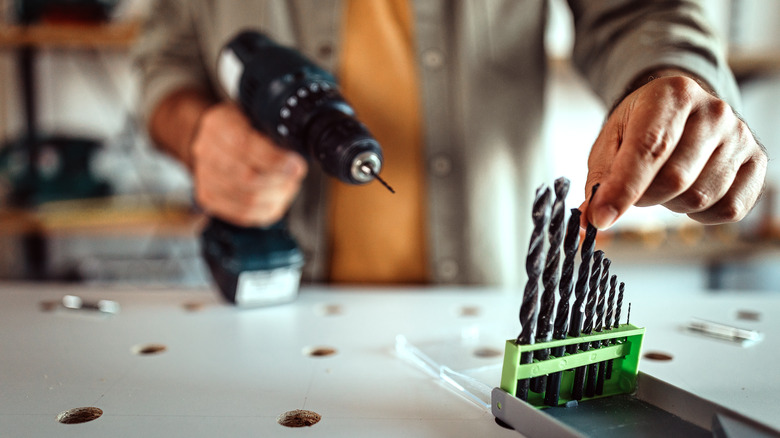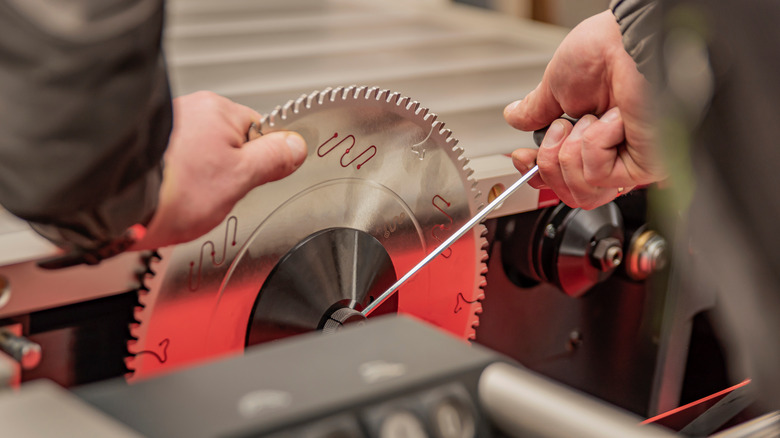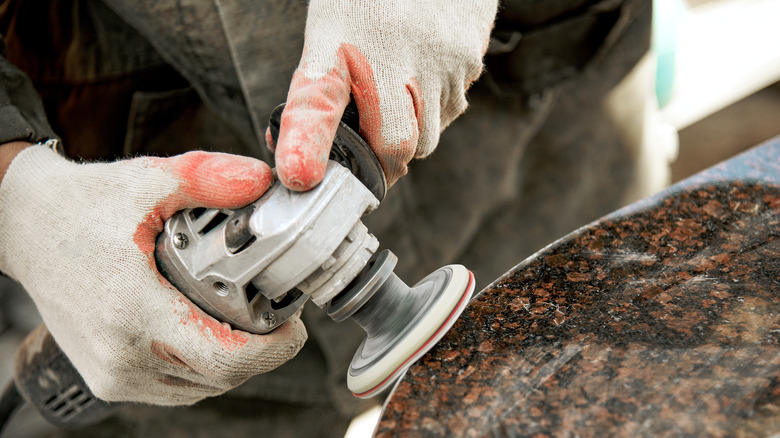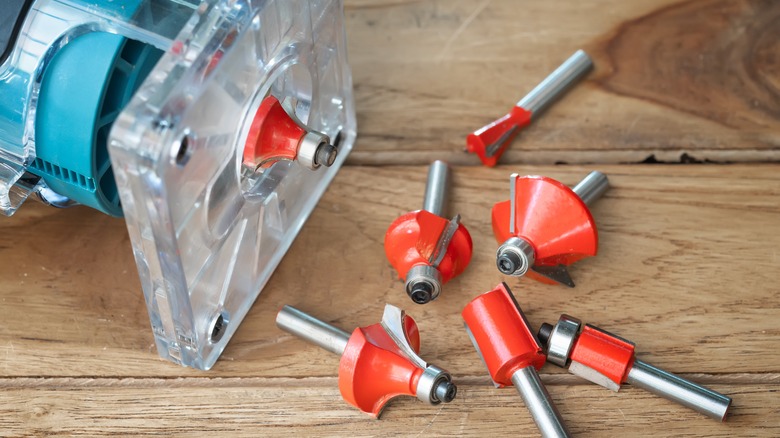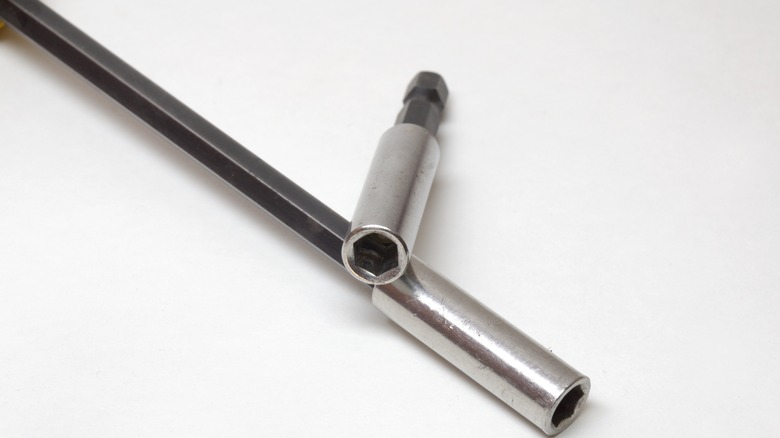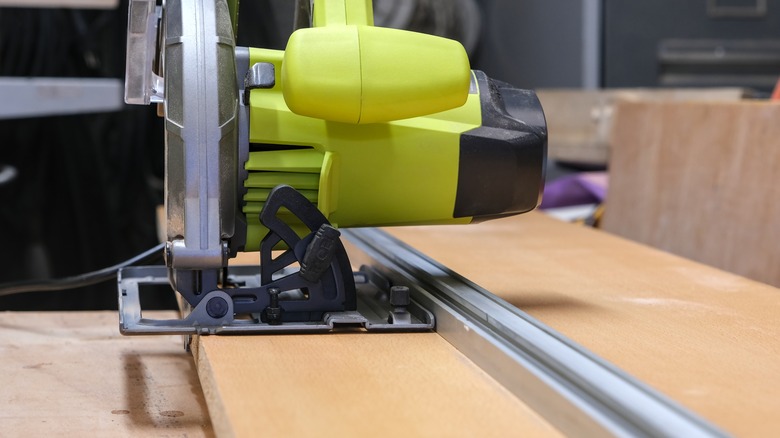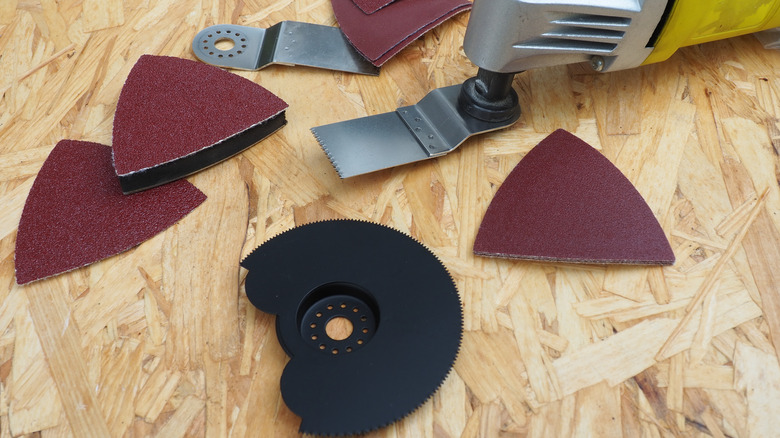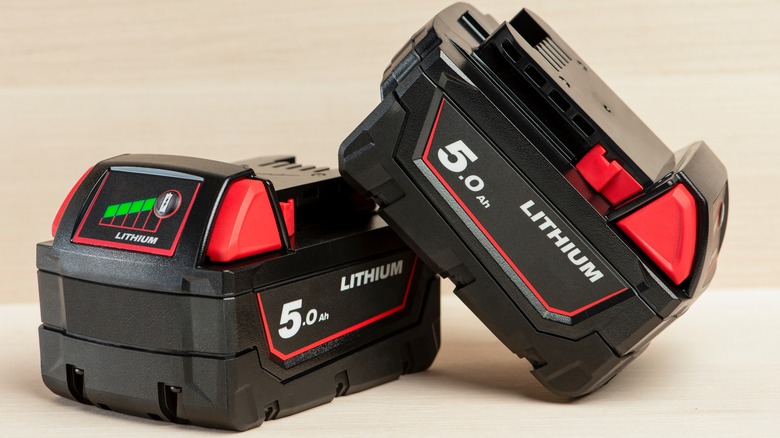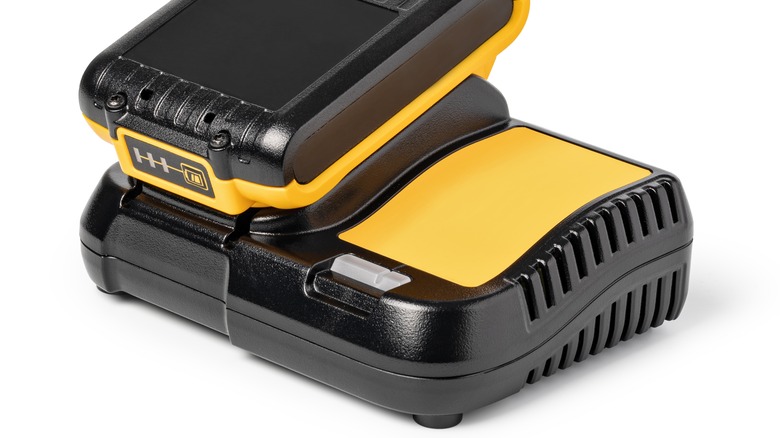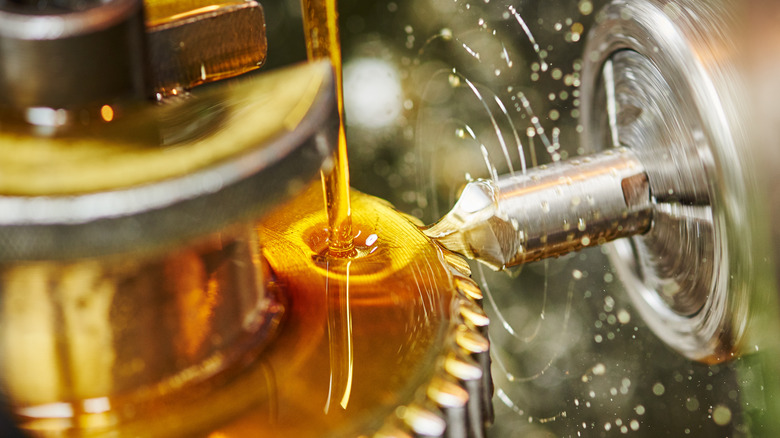Power Tool Accessories That Every Homeowner Should Have
We may receive a commission on purchases made from links.
Power tools help homeowners accomplish a plethora of DIY tasks quickly, effectively, and without needing expensive contractors. But even the best power tools are hardly useful without a suite of accessories to support their function. These add-ons drill holes, cut through materials, finish surfaces, and help the tools stay charged.
Most modern power tools accommodate a range of accessories that you can swap out quickly as you move through different stages of your home improvement project. For example, a quality bit kit lets your power drill make holes in almost any material and drive screws in quickly, without manual effort. Likewise, outfitting your power saw with a multitude of blades gives you flexibility in your workshop — and saves frequent trips to the hardware store.
However, like power tools, accessories are not always cheap. So, you may wonder which of these add-ons are worth the investment. To help you decide, we've overviewed the most useful and versatile accessories you should consider stocking in your toolbox.
Drill bits in various diameters
A power drill is one of the most useful and versatile tools in a homeowner's arsenal, but its utility hinges on the tiny piece that does all the work — the drill bit. This piece must penetrate the material you're drilling without sustaining or inflicting damage. The bit should also leave you with an adequately sized hole. Investing in a complete set of drill bits for various uses and hole sizes prepares you to tackle any DIY project.
Different drill bits are designed to make holes in different materials. The bit's configuration, material, finish, and drive style determine its application. For example, twist bits are made specifically for wood, plastics, and metals, while masonry bits can core through brick, concrete, and stone. Most materials that comprise the home's structure or finishes have corresponding drill bits that penetrate them with ease.
Moreover, different drill bit sizes help homeowners create holes that fit their screws. Drill bits are sized by their diameter, which should match the screw's center core. This way, the screw's thread fastens securely as you drive it inside the pilot hole. Screws commonly range from 1/16 to 1/4 inches in diameter, so a set of drill bits corresponding in diameter should prepare you for almost any DIY task. Consider investing in a set with drill bits in various sizes and a selection of Phillips, Torx, square, and slot screwdriver bits, such as this set from Home Depot.
Saw blades for different materials
Power saws help homeowners with a wide array of DIY projects. However, you won't get much accomplished without a good selection of saw blades handy. It's wise to stock up on several blade types since the material you're cutting — and the blades you need — will differ depending on your task.
The blade's tooth configuration determines the material and the type of cut you can make. The rule of thumb is that finer cuts demand more teeth that are positioned tightly together, while blades with fewer teeth are best suited for coarse, quick sawing jobs. Consequently, saw blades with larger teeth that are far apart (24 teeth) are ideal for cutting large members, such as lumber, laminated beams, or pressure-treated decking material. On the other hand, saw blades with tiny, tightly grouped teeth (60-96 teeth) are ideal for veneered plywood, MDF, metals, and plastics. If you need to saw through tile or slate, however, consider investing in a continuous-rim, diamond-edged blade.
Reciprocating saw blade sets generally offer the best variety of blades. For example, this 50-piece Milwaukee set from Home Depot equips you with 17 blade types of varying tooth-per-inch counts and lengths. Conversely, circular saw blade sets typically come with fewer pieces. For a lower-cost option, you can try this assorted 3-pack from Lowe's — you'll get a 24-tooth blade for wood, a 60-tooth blade for metal, and a carbide blade for cutting ceramic tile.
Abrasive discs in a variety of grits
Most DIY home projects demand some level of surface refinement as you prepare floors, ceilings, walls, or cabinetry for their finishes. Orbital sanders are power tools that help you remove surface imperfections quickly by eliminating the need for manual sanding. Having a large selection of abrasive discs to attach to the sander leaves you ready to take on any project involving a coarse surface.
When choosing sanding discs for your orbital sander, consider the disc material. For example, aluminum oxide discs are most commonly used in home applications since they're ideal for sanding wood and plastics. Meanwhile, diamond discs are significantly tougher, and are designed to sand down masonry, ceramics, or glass.
Grit matters, too. Extra-coarse grit (24-36) is ideal for stripping down old finishes and smoothing particularly rough surfaces. On the other hand, abrasive discs with a finer grit (150-220) are more suitable for refining surfaces that are already smooth — like kitchen cabinet doors before you stain them. Having a robust selection of discs with different grits leaves you ready to tackle most sanding jobs around the house. This abrasive assortment from Rockler is a comprehensive option with over 100 discs ranging between 60 and 220 in grit, all compatible with 5" sanders.
Router bits for woodworking
Router bits are essential accessories for any homeowner with a passion for woodworking. These little bits attach to routers — power tools designed for coring through wood (or other materials) to shape its surface. Routers rotate bits much like drills spin their drill bits. However, router bits cut with their edge to produce the desired shape or texture on the wood instead of simply creating holes like drill bits do.
A good selection of router bits lets you create a variety of shapes in different materials. For example, straight router bits can help you hollow out a wood surface to make a mortise. On the other hand, chamfer bits, rabbeting bits, and ogee bits allow you to make various types of cuts along the edge of a wood panel. Not all router bits are meant for wood, though. Working with materials like metal, fiberglass, plywood, and MDF typically demands specially designed bits that won't harm the material (or themselves) in the process.
Many DIY woodworking projects, from beginner to advanced levels, require router bits for grooving, trimming, shaping edges, and creating joints. This 15-piece router bit set from Home Depot contains options for a variety of tasks. It includes flush trim, straight, rabbeting, dovetail, chamfer, Roman ogee, hinge mortising, and roundover bits ranging in size between ¼ and ⅝ of an inch.
Bit extensions for tight spaces
Bit extensions help you drill in otherwise inaccessible places by extending the bits' reach. For example, a structural piece inside a wall cavity may be farther than your arm can get to, but an extension will help you span the distance just enough to drill the hole. Likewise, you may have insufficient clearance to angle your tool properly when working in tight places, so you'll need a flexible extension to help maneuver your bit.
Bit extensions come in various types and sizes. Some are designed just to prolong the extent of twist or screwdriver drill bits, while others can bend to enable drilling where the drill won't fit. The extensions vary in length and their design can differ to accommodate different shank types.
Given the number of extension variations, you'll struggle to find an all-encompassing set that would prepare you to drill in any hard-to-reach spot. That said, having a few rigid and flexible extensions of several lengths should leave you ready to handle most locations. This impact-compatible DeWalt set from Home Depot provides you with sturdy, long-lasting extensions that enable drilling at several different angles and guide your bits into tricky spots.
Saw tracks for straight cuts
Track saws cut along straight lines by keeping the blade fixed above the material you're cutting. Most track saws are sold with matching tracks. However, you can also use certain specialized tracks to guide your regular circular saw and make cuts more precise. Guiding your saw helps stabilize any cut, but tracks are particularly helpful for sawing lengthy pieces (like when you're making a rip cut).
Kreg is a company that specializes in these standalone saw tracks. These aluminum tracks come with sleds that accommodate different saw brands and models. The tracks' slip-resistant bottom keeps them from sliding around as you make your cuts, and their starting block helps you align the blade before you start. Kreg's online store offers these tracks in 50-inch and 100-inch lengths to suit various woodworking projects. This extension package gives you an additional 100 inches of track for particularly long cuts.
Oscillating tool attachments for versatile uses
Oscillating tools are often called "multi-tools" because they can perform such a large variety of tasks. Their head moves rapidly back and forth at a small angle. This oscillating movement allows the attachment to saw, grind, sand, rasp, and polish various materials. Each of these tasks requires a different type of attachment.
If you need to make short, accurate cuts, or cuts that extend deep into the surface, a straight blade is most suitable. Conversely, a semi-circular blade helps you make longer, straight cuts more accurately. Either of these blade shapes can make flush cuts, which are often used to saw under an existing baseboard to make room for new flooring material. Meanwhile, if you plan to use your oscillating tool for sanding or scraping, consider the attachment's shape and grit. Most multi-tool sanding attachments are triangular to facilitate working in hard-to-reach places, like corners. However, you can opt for narrower pads when sanding in less accessible spots. Choose the coarser grit (up to 100) for rough, scraping jobs, and finer grit (100 and up) for finishing surfaces.
A quality attachment allows you to use your oscillating tool for all the cutting, grinding, and sanding tasks it's meant to handle. For example, this 20-piece Milwaukee set from Home Depot features straight blades in seven sizes, a semi-circular blade, and a sanding attachment with 60-grit and 120-grit sandpaper sheets. This substantial assortment of accessories should suffice for most DIY multi-tool jobs.
Batteries to keep power tools running
Cordless power tools give you the flexibility to work in different locations without worrying about connecting extension cords. However, the batteries have a limited power supply, which may deplete quickly with intensive use. Keeping a stash of pre-charged replacement batteries on hand helps you minimize project downtime.
Power tool batteries are typically only compatible with equipment from the same brand. So, you have little choice but to buy batteries from the same maker as your tool. That said, you may have more options in how long the battery lasts between charges as the capacity depends on its amp-hours. Higher amp-hour ratings translate to longer usage without stopping to recharge. At the same time, this rating has a positive correlation with the battery's price and bulkiness.
If all your power tools are from a single manufacturer, you're in luck — a single battery (or set) should work with them all. Otherwise, you'll have to buy different replacement batteries to match each one you own. For example, this 5Ah DeWalt battery pack from Home Depot works with all the brand's 20-Volt tools. Or, if you own tools from Milwaukee's M18 lineup, you can purchase an extra battery or two at Ace Hardware.
Battery chargers to power them back up
Even premium, high amp-hour lithium batteries eventually run out and need charging. To reduce the time your cordless power tools sit idle, consider investing in quality chargers. Like batteries, chargers are designed to work with tools from specific brands.
When you're choosing a charger, the key factor to consider is the speed with which it replenishes the battery's power store. The slowest of chargers may cost less, but you also may need to leave your battery on overnight for a full charge. Regular chargers do the job in about six hours, while the fastest models come at a cost but can have your tool up and running again within an hour. For DeWalt tools, this four-port charger from Lowe's allows you to charge multiple batteries at once and has an average charging time of an hour and a half. If your toolbox contains Milwaukee tools, you can power them with this two-port, fast lithium battery charger from Home Depot that also comes with two 18V 6Ah batteries.
Power tool stands for more functionality
Your power tools enable you to work on a multitude of DIY tasks. Some of these activities demand that you stabilize the material you're handling and position it at a comfortable working height. Power tool stands are the answer — they allow you to drill, saw, grind, and sand virtually any material without kneeling on the floor and straining your back.
A tool stand's intended use dictates its configuration. For example, miter saw stands come with special mounting brackets to secure the saw and beams that hold the material you're cutting. These tables are designed to support heavy loads. Meanwhile, grinder stands have a much smaller footprint and only provide enough surface area to mount the grinder on top. Some multi-purpose benches can be used for numerous DIY tasks and even help you store your equipment. However, you must ensure it's equipped to support your type of power tool and the maximum weight of machinery and materials. First, establish what working height you're most comfortable with and find a stand to accommodate it. Since the optimal height may vary depending on the task, an adjustable stand is a wise option.
Since many DIY projects involve multiple tasks, it's best to invest in a stand that supports a variety of power tools. This multi-purpose stand from WEN from Home Depot is designed for miter saws and planers — two common power tools that must be operated on a sturdy work surface. It can also accommodate other tools and tasks, such as grinding, sanding, drilling, and routing.
Power tool lubricants to keep things running smoothly
Power tools rely on moving parts to rotate, oscillate, and reciprocate their bits that do the drilling, sanding, sawing, and grinding. These motions cause friction as the moving parts come in contact with each other. This heats the parts and endangers the power tool, while also speeding up the components' wear and tear. Lubricating them regularly is essential for averting friction-caused damage, and prolonging your power tools' lifespans.
Lubricants prevent friction by coating the surfaces of a tool's parts to prevent them from contacting each other while in motion. Without direct contact, the parts don't rub against each other, which averts damage-causing friction. Some modern power tool lubricants also protect the machines' parts from corrosion and collect dust that would otherwise build up in the nooks and crannies.
When choosing a lubricant for your power tool, consider how it can protect your machinery apart from reducing friction. Rust prevention is essential, especially if you use your power tool in a humid or marine climate. Fortunately, many lubricants on the market come with rust inhibitors — chemicals that block moisture from contacting the parts to prevent corrosion. For example, this WD-40 silicone lubricant from Amazon is designed to avert friction, corrosion, and debris buildup.

